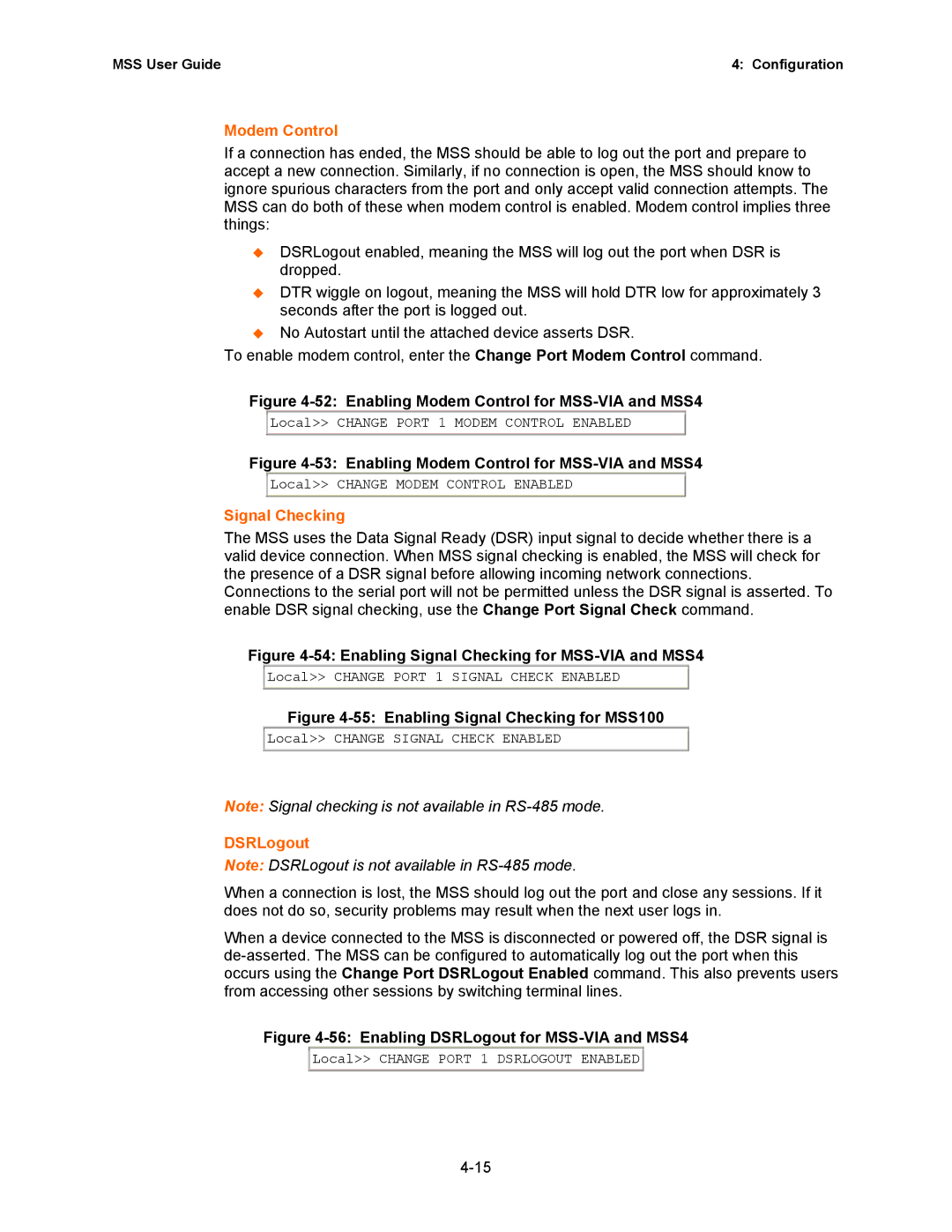
MSS User Guide | 4: Configuration |
Modem Control
If a connection has ended, the MSS should be able to log out the port and prepare to accept a new connection. Similarly, if no connection is open, the MSS should know to ignore spurious characters from the port and only accept valid connection attempts. The MSS can do both of these when modem control is enabled. Modem control implies three things:
DSRLogout enabled, meaning the MSS will log out the port when DSR is dropped.
DTR wiggle on logout, meaning the MSS will hold DTR low for approximately 3 seconds after the port is logged out.
No Autostart until the attached device asserts DSR.
To enable modem control, enter the Change Port Modem Control command.
Figure 4-52: Enabling Modem Control for MSS-VIA and MSS4
![]() Local>> CHANGE PORT 1 MODEM CONTROL ENABLED
Local>> CHANGE PORT 1 MODEM CONTROL ENABLED
Figure 4-53: Enabling Modem Control for MSS-VIA and MSS4
![]() Local>> CHANGE MODEM CONTROL ENABLED
Local>> CHANGE MODEM CONTROL ENABLED
Signal Checking
The MSS uses the Data Signal Ready (DSR) input signal to decide whether there is a valid device connection. When MSS signal checking is enabled, the MSS will check for the presence of a DSR signal before allowing incoming network connections.
Connections to the serial port will not be permitted unless the DSR signal is asserted. To enable DSR signal checking, use the Change Port Signal Check command.
Figure 4-54: Enabling Signal Checking for MSS-VIA and MSS4
![]() Local>> CHANGE PORT 1 SIGNAL CHECK ENABLED
Local>> CHANGE PORT 1 SIGNAL CHECK ENABLED
Figure 4-55: Enabling Signal Checking for MSS100
![]() Local>> CHANGE SIGNAL CHECK ENABLED
Local>> CHANGE SIGNAL CHECK ENABLED
Note: Signal checking is not available in
DSRLogout
Note: DSRLogout is not available in
When a connection is lost, the MSS should log out the port and close any sessions. If it does not do so, security problems may result when the next user logs in.
When a device connected to the MSS is disconnected or powered off, the DSR signal is
Figure 4-56: Enabling DSRLogout for MSS-VIA and MSS4
![]() Local>> CHANGE PORT 1 DSRLOGOUT ENABLED
Local>> CHANGE PORT 1 DSRLOGOUT ENABLED ![]()
